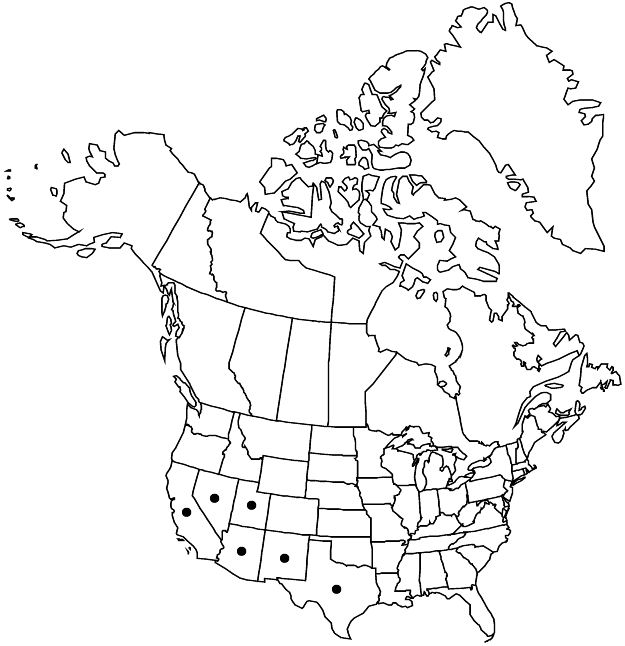Euphorbia micromera
Proc. Amer. Acad. Arts 5: 171. 1861.
Herbs, annual, with slender taproot. Stems prostrate, mat-forming, 5–35 cm, glabrous or shortly pilose. Leaves opposite; stipules distinct, subulate, 0.2–0.4 mm, pilose; petiole 0.5–1.2 mm, glabrous or pilose; blade ovate to elliptic, 6–15 × 2–4 mm, base asymmetric, one side cuneate to rounded, other side rounded, margins entire, apex obtuse, surfaces glabrous or pilose; venation obscure or only midvein conspicuous. Cyathia solitary at distal nodes; peduncle 0.4–1.4 mm. Involucre campanulate, 0.4–0.6 × 0.5–0.9 mm, glabrous or pilose; glands 4, red, circular to oblong, 0.1 × 0.1–0.2 mm; appendages absent. Staminate flowers 2–5. Pistillate flowers: ovary usually glabrous, rarely pilose; styles 0.1–0.2 mm, 2-fid at apex. Capsules oblong, 1.3–1.5 × 1.1–1.3 mm, usually glabrous, rarely pilose; columella 1–1.2 mm. Seeds light gray, narrowly ovoid, 4-angled in cross section, 0.9–1 × 0.5–0.6 mm, smooth to slightly rugose or with 1–4 faint transverse ridges that do not pass through abaxial keel.
Phenology: Flowering nearly year-round in response to sufficient rainfall.
Habitat: Desert scrub, riparian woods with ash and willow, saltbush scrub, Joshua tree woodlands and grasslands, often in sandy or gravelly areas.
Elevation: -20–1800 m.
Distribution

Ariz., Calif., Nev., N.Mex., Tex., Utah, Mexico (Baja California, Baja California Sur, Chihuahua, Coahuila, Durango, Sonora).
Discussion
Selected References
None.